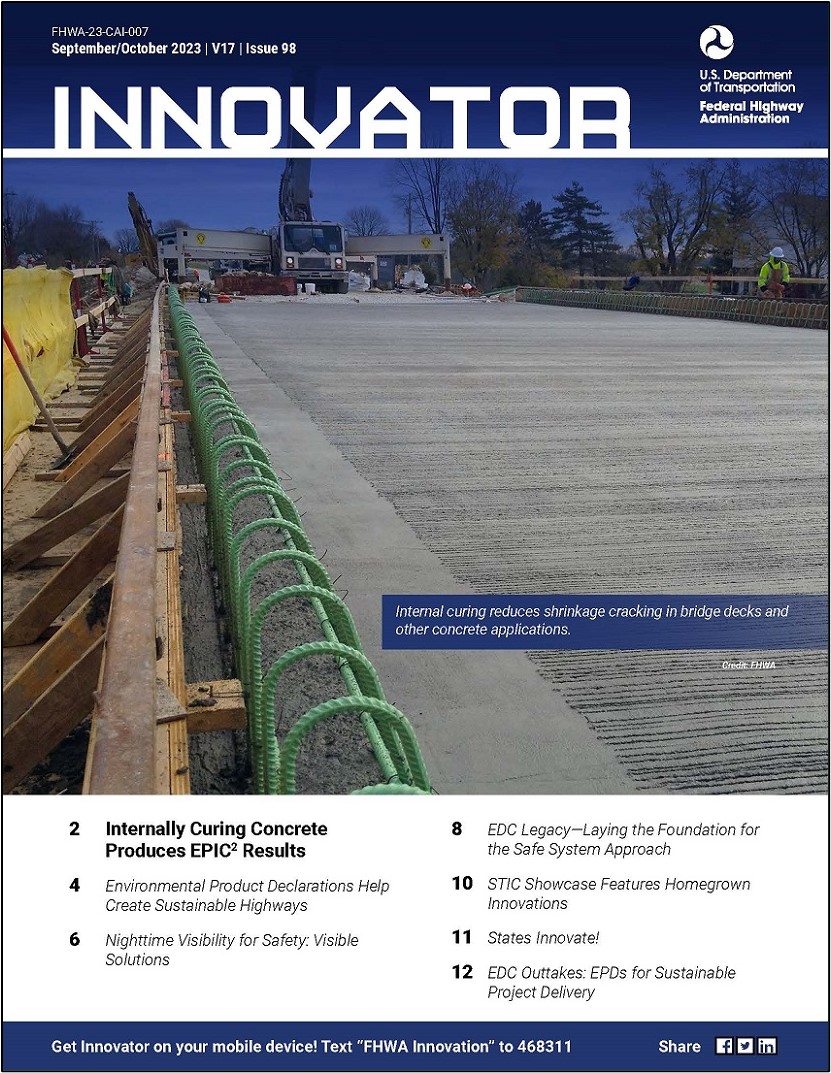Curing Concrete Produces EPIC Results
Internally curing concrete has been shown to increase the service life of concrete bridge decks by 25 to 50 years while also preventing crack formations resulting from concrete shrinkage. Such cracks can be detrimental because they provide a direct path for chlorides to reach embedded steel reinforcement in the bridge, leading to corrosion.
Unlike conventional curing, where water is supplied on the concrete’s surface, internal curing provides a source of moisture from inside the concrete mixture, improving its resistance to cracking and overall durability.
“Internal curing was explicitly designed to solve early-age cracking issues that are inherent to higher-performance concretes" says Tim Barrett, co-leader of FHWA's Every Day Counts (EDC) Enhancing Performance with Internally Cured concrete (EPIC2) team.
The success of internally curing concrete is one of many topics covered in the September/October 2023 issue of FHWA's Innovator Magazine.
Additional articles in this issue include:
- Environmental Product Declarations Help Create Sustainable Highways
- Nighttime Visibility for Safety: Visible Solutions
- EDC Legacy—Laying the Foundation for the Safe System Approach
Access the full version here
Innovator Magazine
Innovator, published by the FHWA Center for Accelerating Innovation, advances the deployment of innovative technologies and accelerated project delivery methods in highway transportation.
Innovator is designed for transportation professionals in highway agencies, trade & research groups, academia, the private sector, and the driving public.

